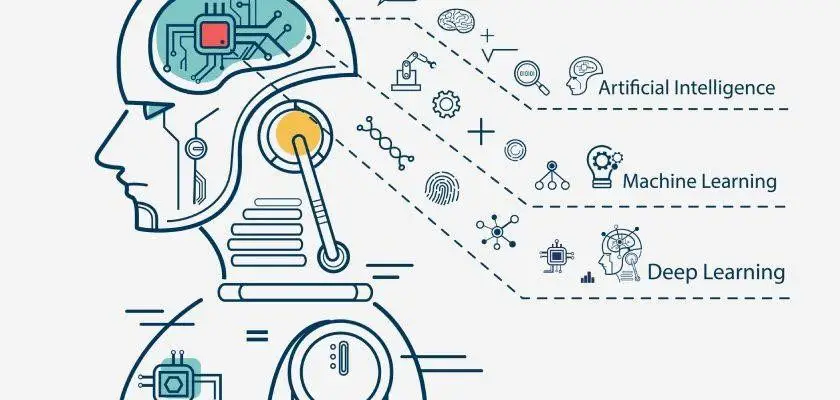

Machine learning blogs offer illuminating perspectives for readers on recent trends, new products, and industry news to keep up to date on the latest industry news.
A famous example to understand this basic concept is:
“We must go out for dinner. The refrigerator isn’t speaking to the stove.”
In this example, the machine learning result guarantees solutions for several root problems. The developers map business problems to programs, but the machine learning processes involved are very different.
Machine learning usually refers to the changes in systems that perform tasks associated with artificial intelligence (AI).
As a society, we have strived for several decades to understand how humans think, predict, perceive, and manipulate. In turn, the domain of AI not only pushes this effort to understand and replicate human behavior on a technological level.
Al is currently considered one of the most recently advanced scientific fields and a particularly hot topic for the tech development community in 2021. Although it may seem recent that the idea of artificial intelligence became relevant – the name itself dates back to 1956, soon after WWII.
Historically, the idea of Al and its use has always fascinated humanity, but many might not even know what it truly is. In essence, artificial intelligence describes the systems that act and think rationally – like humans.
Applications of AI
Various tools help to achieve results, including logic, probability, optimization, economics, and more. Artificial intelligence holds many other major fields ranging from linguistics, neuroscience to computer science.
Natural Language Processing, speech recognition, automotive applications, vision systems, and gaming are just some of the interesting applications for Al use.
High-level face feature transformation is a demanding and exciting example as there are a number of variations in how a person can present their face to the camera. There are also various other platforms like spell.ml and ai model serving for deep learning applications.
The Limitations of Deep Learning
Although with the advancement of deep learning models, many limitations hinder achieving ideal results. For example, deep learning models are sensitive to rotation and scale parameters and misclassify images based on confusing posters.
Large Training Datasets
A significant drawback of deep learning models is when training datasets are too large as they cannot learn correctly with limited examples.
For instance, a speech recognition task requires several demographics, dialects, and time scales to get the desired output.
Large tech conglomerates like Microsoft and Google might be able to handle those data requirements, but smaller firms are often limited for this reason, even if they have a promising research idea.
The Black Box Problem
Deep learning models work as a black box, making it difficult to understand their decision-making processes and debug them. For example, in the case of a tumor detection task, the doctor wants to know why the model labels some areas and misses others in a scanning report.
Flawed Datasets
Human intelligence generally relies upon and reacts to its social environment. In the case of an incomplete and inaccurate dataset, neural networks may produce embarrassing and inaccurate results.
They’re Not Sureproof
Deep learning models work on approximations. They cannot be expected to always produce accurate results.
Lacking Imagination
DL models often lack imagination and creativity as they mostly focus on dimension reduction and classification problems. They have less potential for long-term planning.
Require Human Annotations
Most deep learning applications are based on supervised learning and need human-annotated data. Although, Deep Q Learning models avoid this issue to a certain extent.
The Limits of Training
However, AI developers and researchers still have a way to go to overcome the challenges and limitations of deep learning algorithms and training models.
In regards to reinforcement learning, the most practiced supervised learning available from current research is different from reinforcement learning.
In supervised learning, data is trained against provided labels to get results for unknown data. On the other hand, reinforcement learning trains itself on the basics of two parameters, i.e., reward and punishment.
A problem and its specifications, a correct result is what we need, which is often a category against that situation. The object related to this type of learning leads the system to generalize or extrapolate its outcome. Hence, it performs correctly against a situation that isn’t a part of the training set.
This type of learning is considered important but alone is not enough to improve the interaction. Sometimes it is impractical to get the desired results that are both accurate and illustrative of all the conditions in which the agent has to decide.
In an unfamiliar region—where anyone would assume learning to be most valuable—an agent must acquire from its own experience, which is how it will improve each time it makes a mistake.
Algorithms were developed to handle a smaller amount of data and help avoid issues with generalization on the program’s part.
Many variations of stochastic gradient descent and other optimization techniques are frequently used in solving real-world machine learning problems with some statistical or mathematical concepts behind them. Adam, Ada grad, and Sorta grad are frequently used optimization algorithms in the place of SGD.
The End Goal
Despite the success of deep learning as a powerful tool for artificial intelligence, there are numerous limitations.
There is a great need to improve the compositional methods to get the best possible underlying structure of models. Furthermore, we must reconsider how we evaluate and train deep learning algorithms.